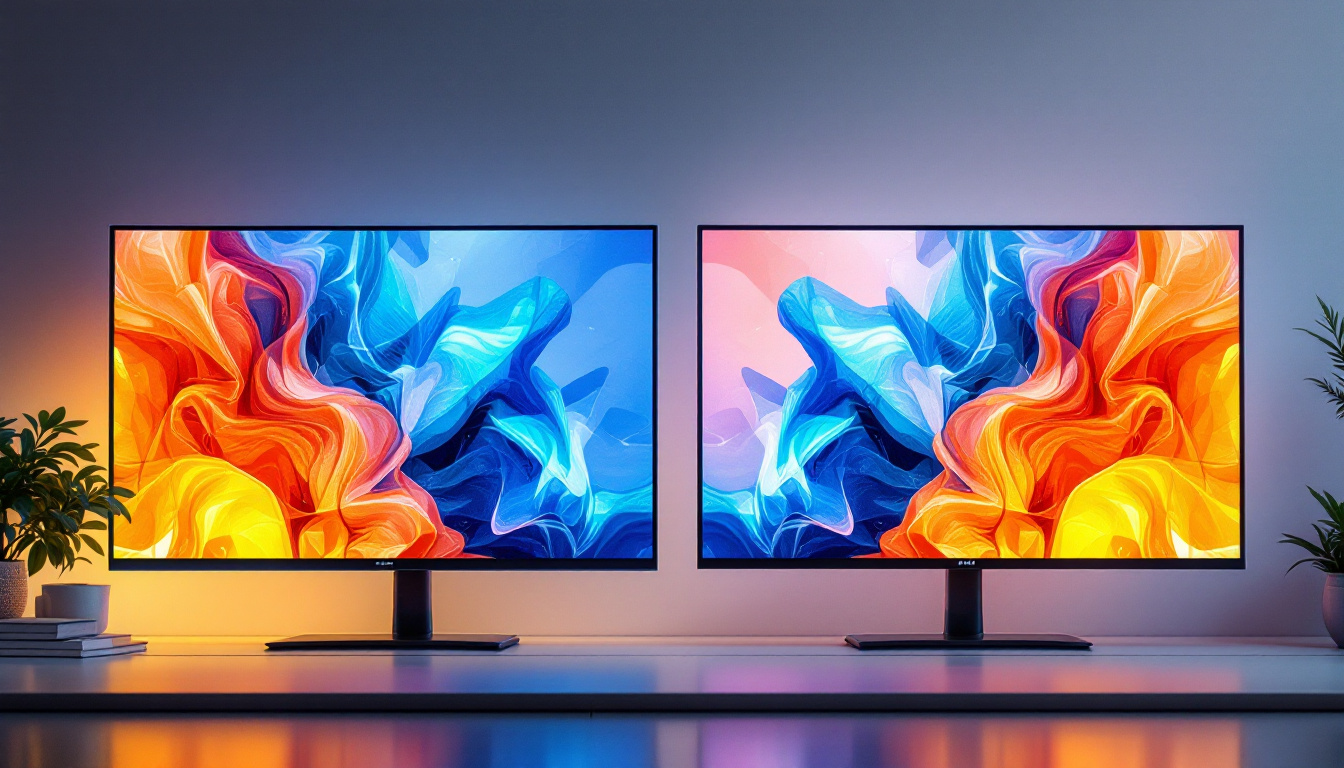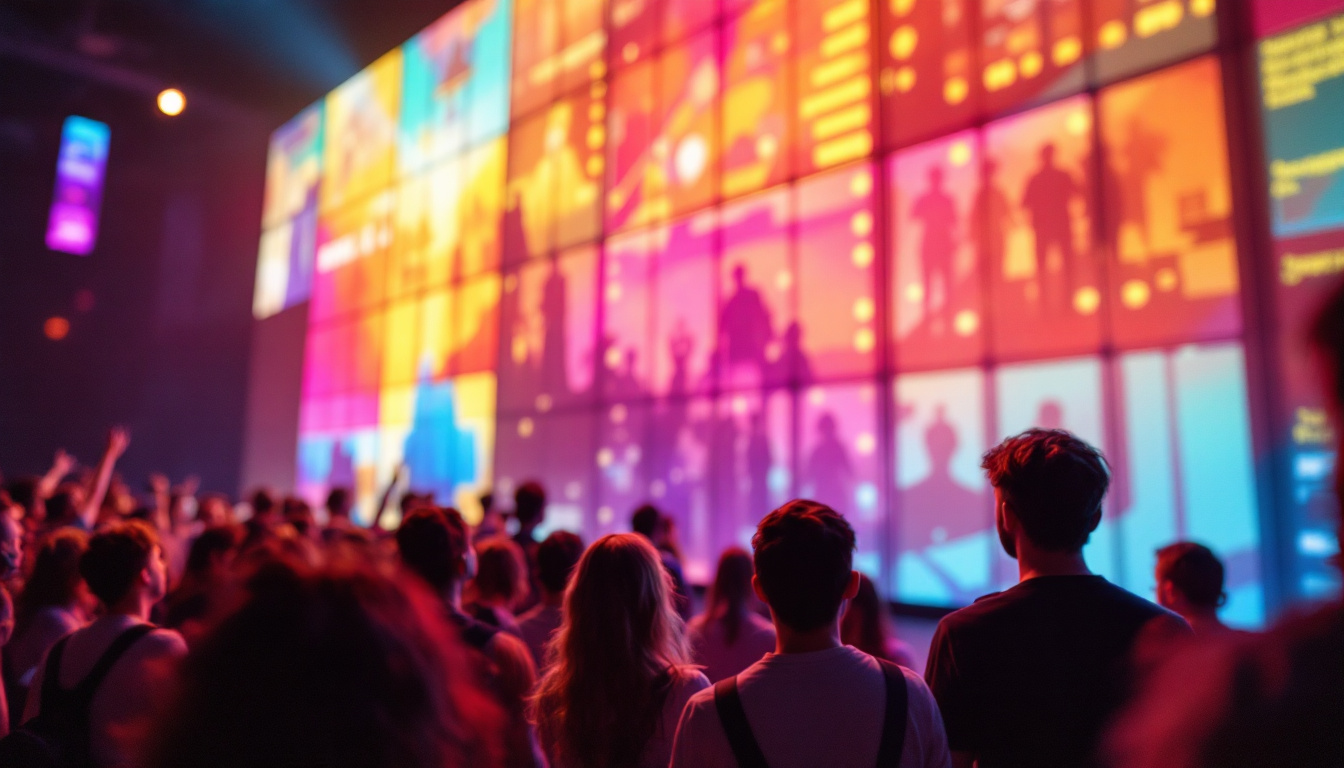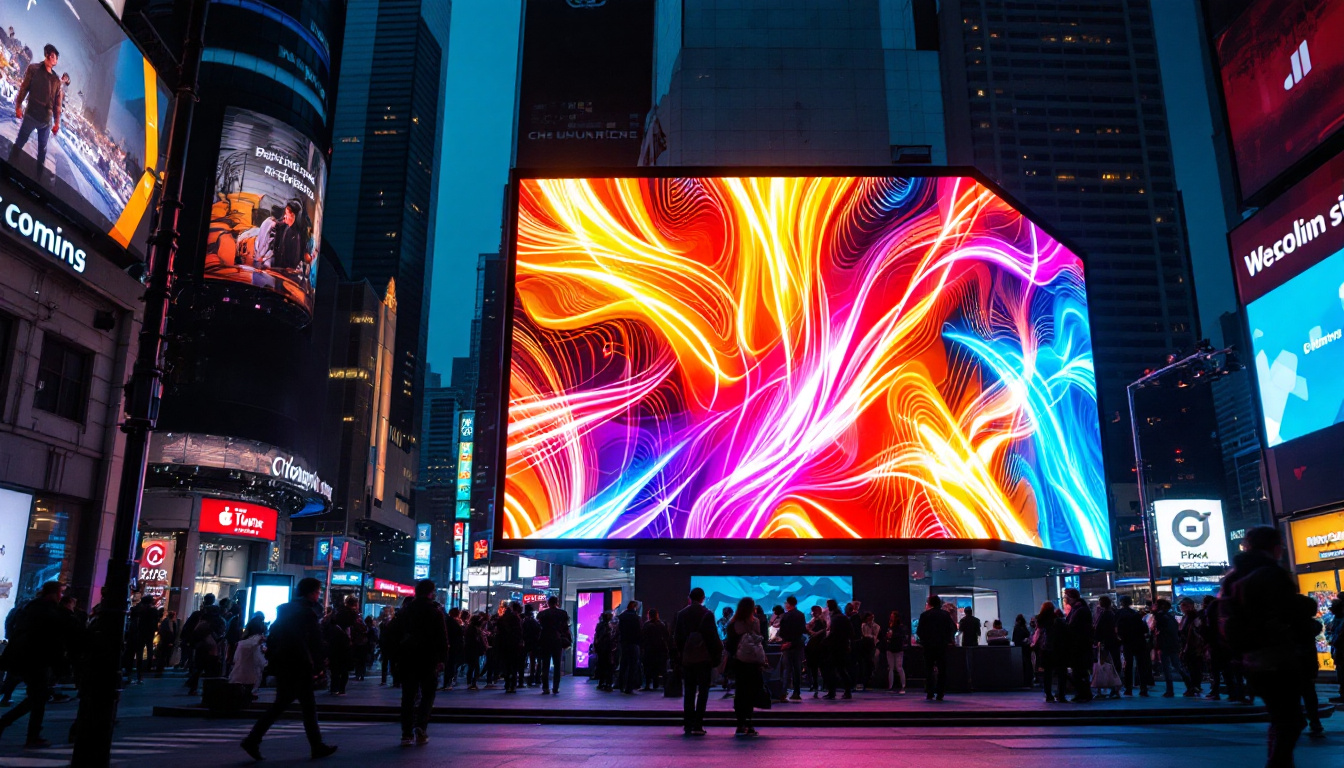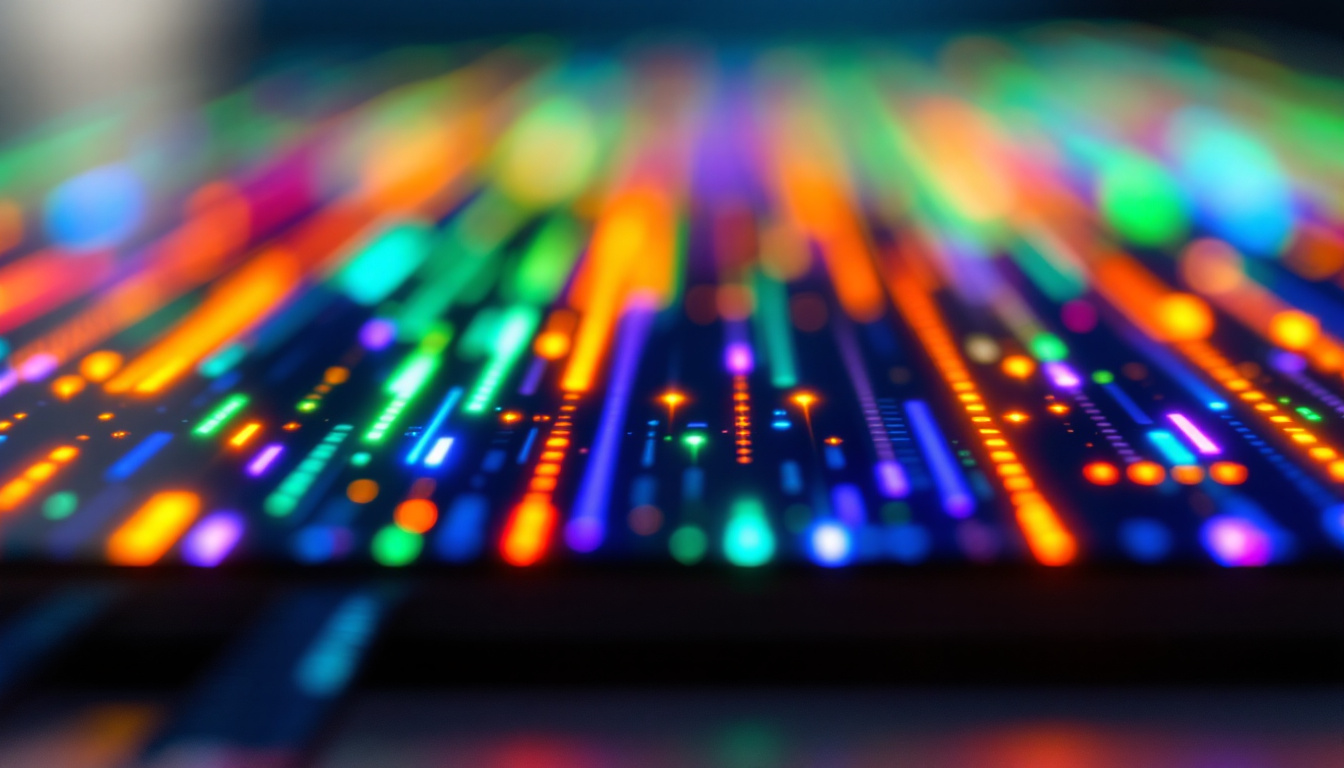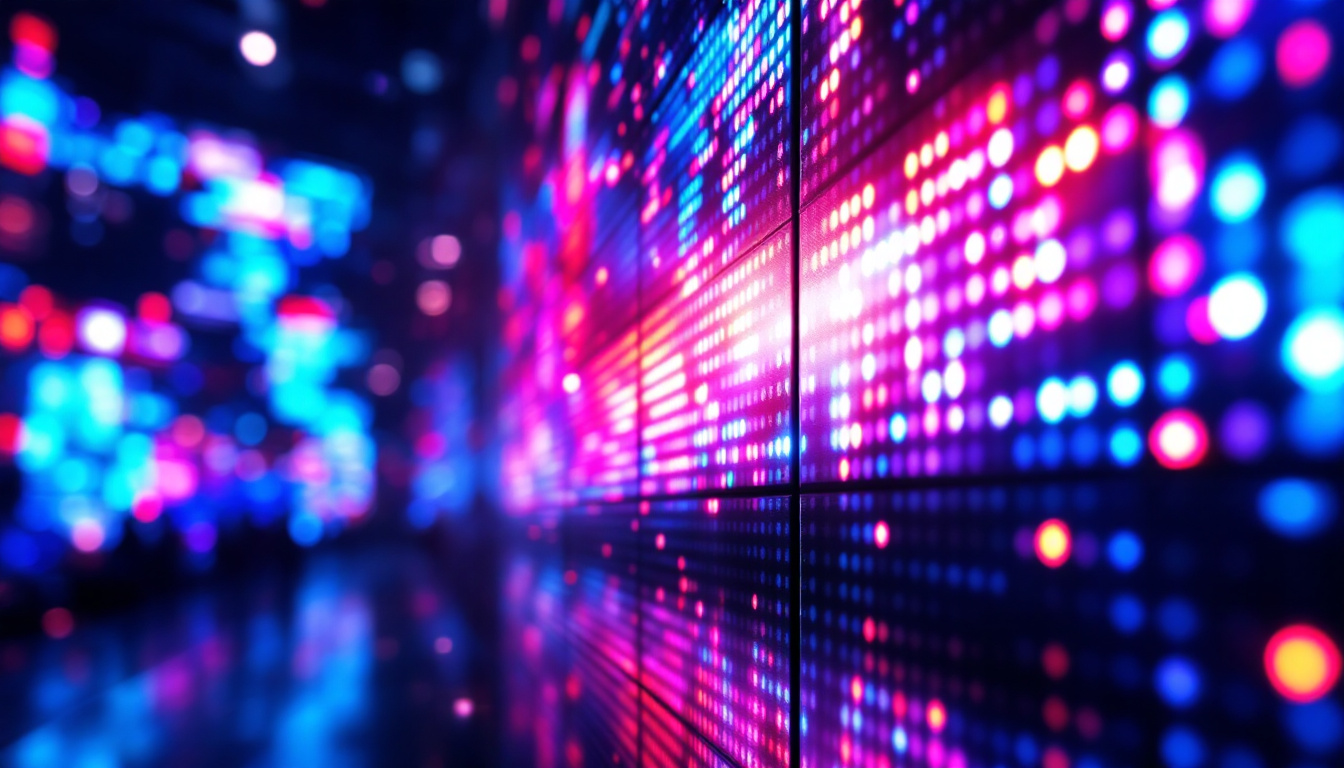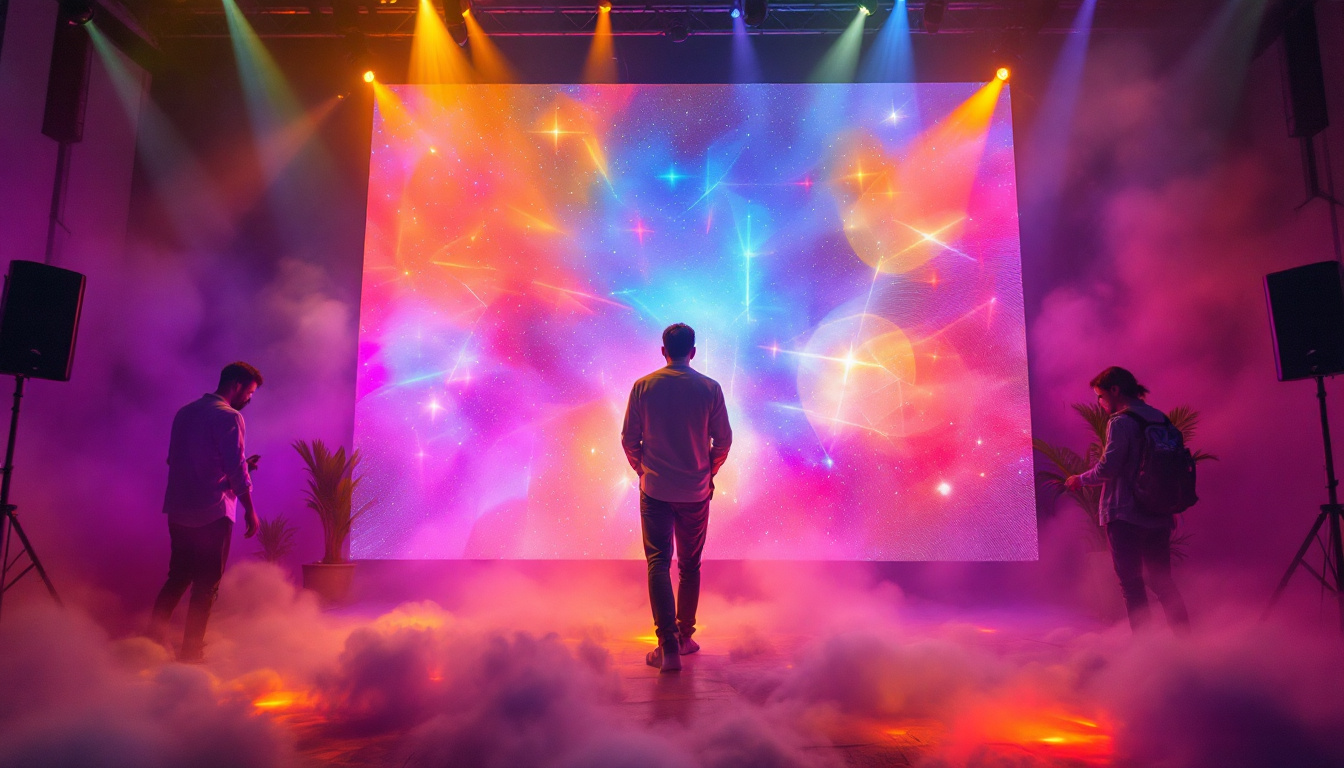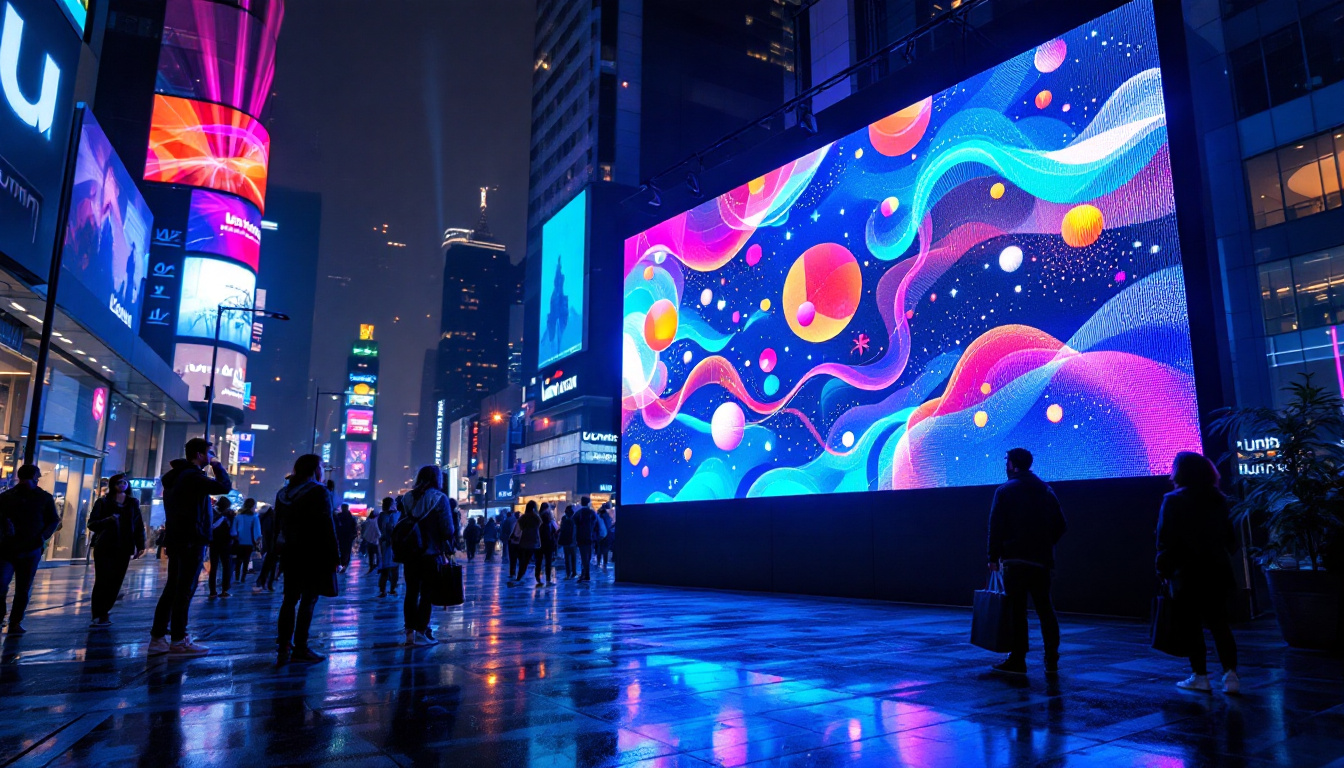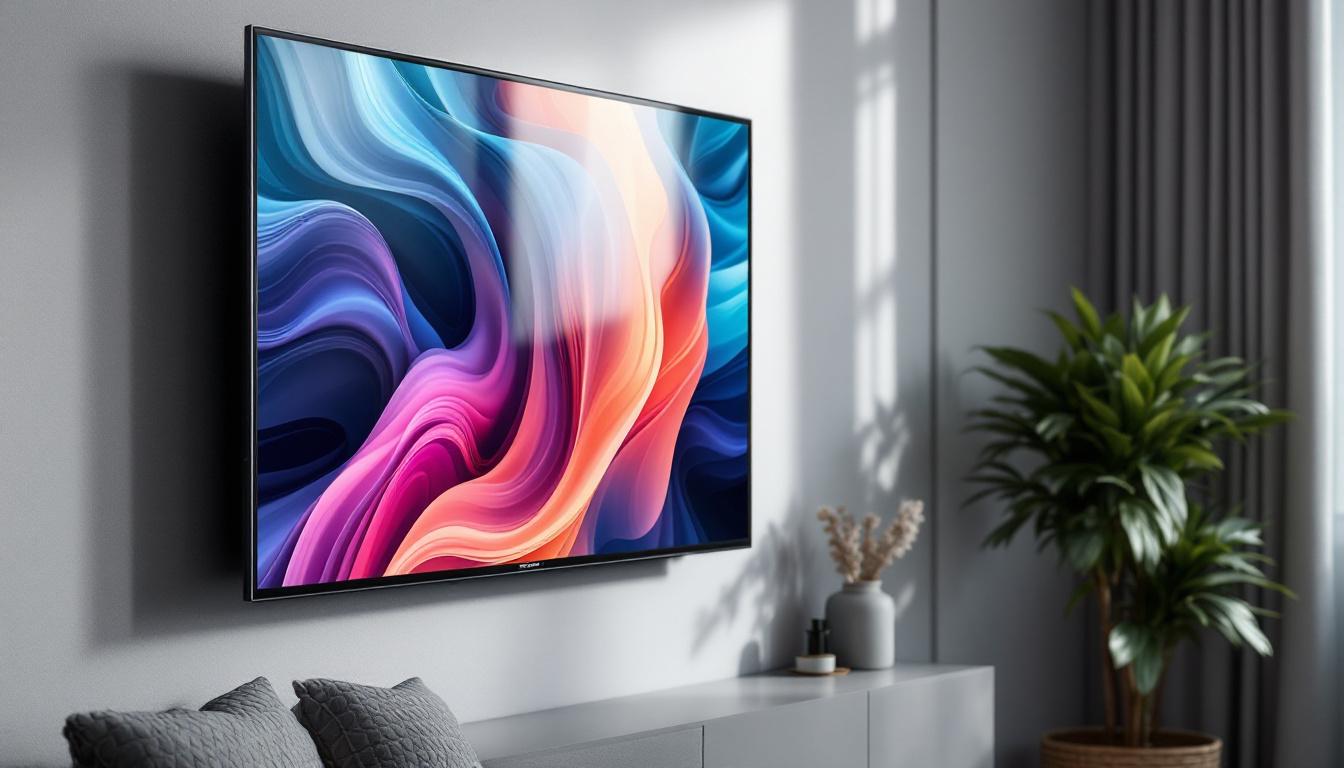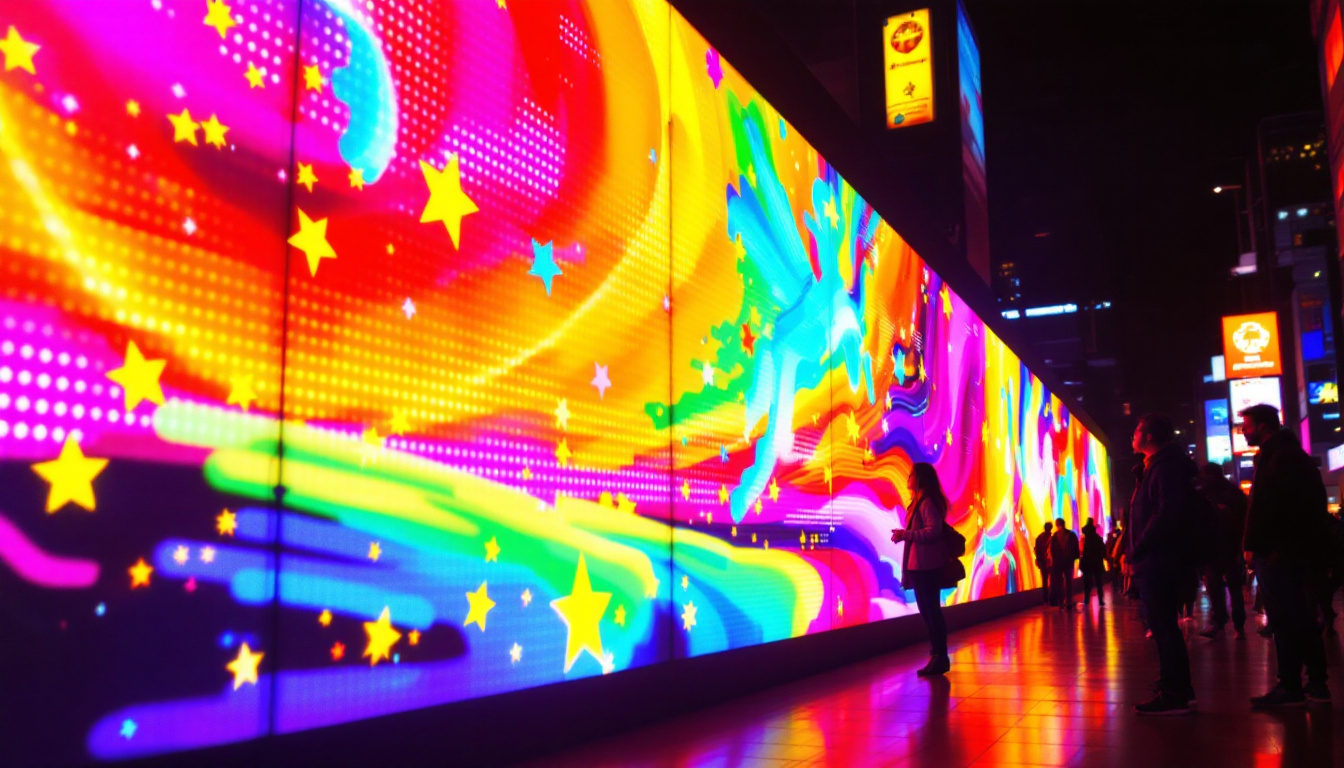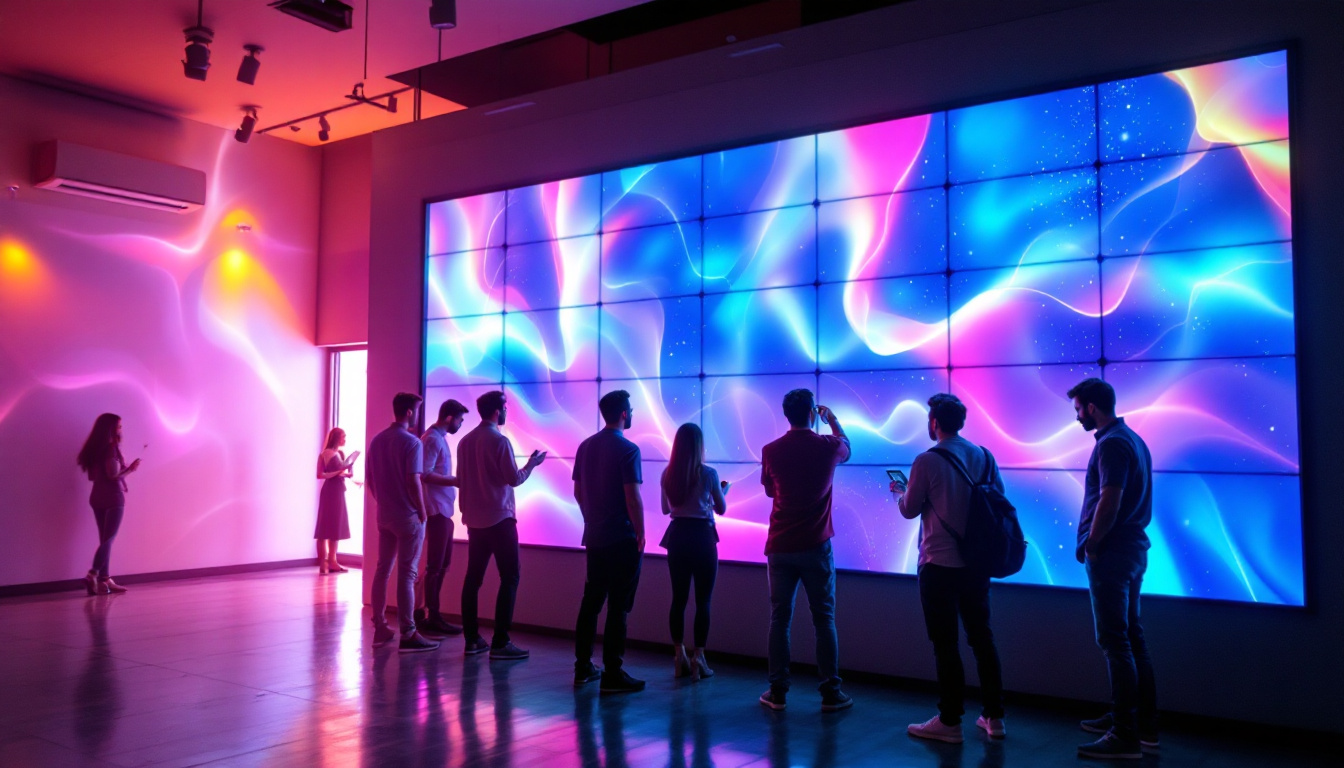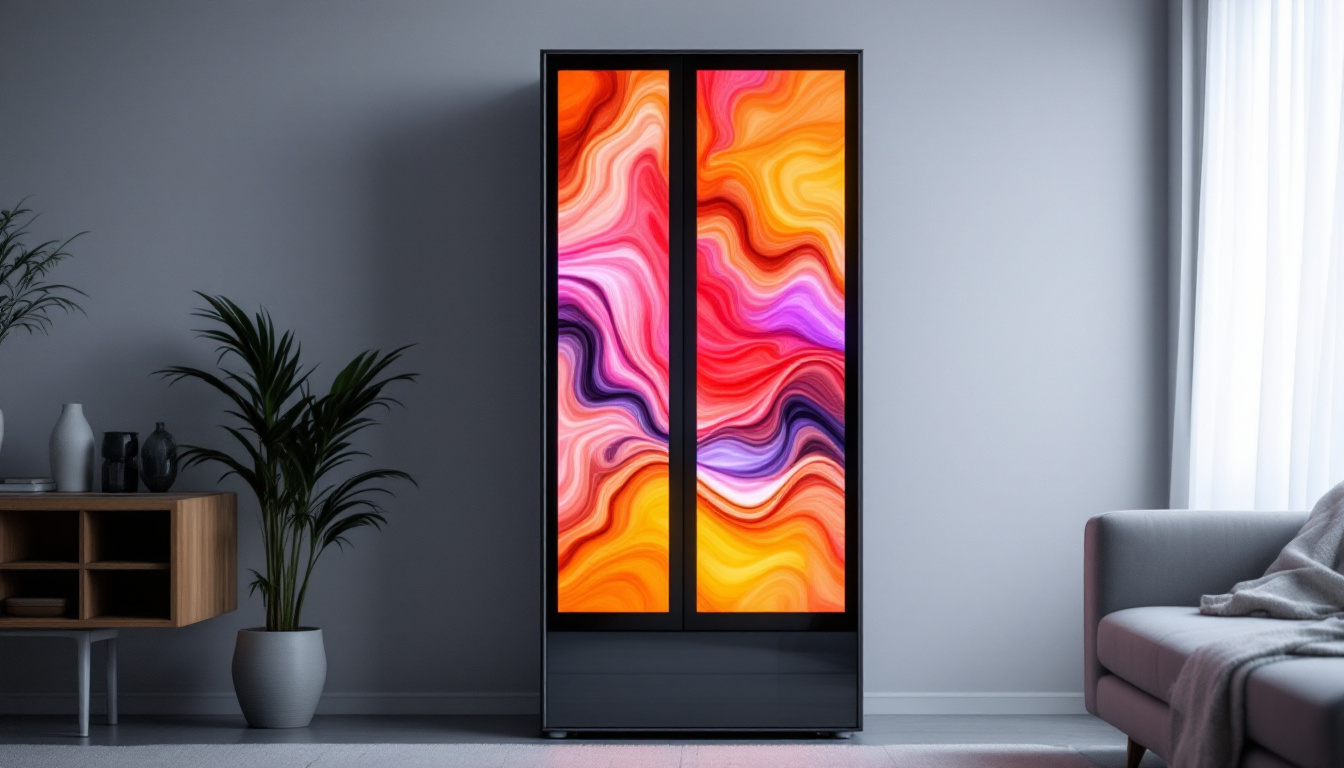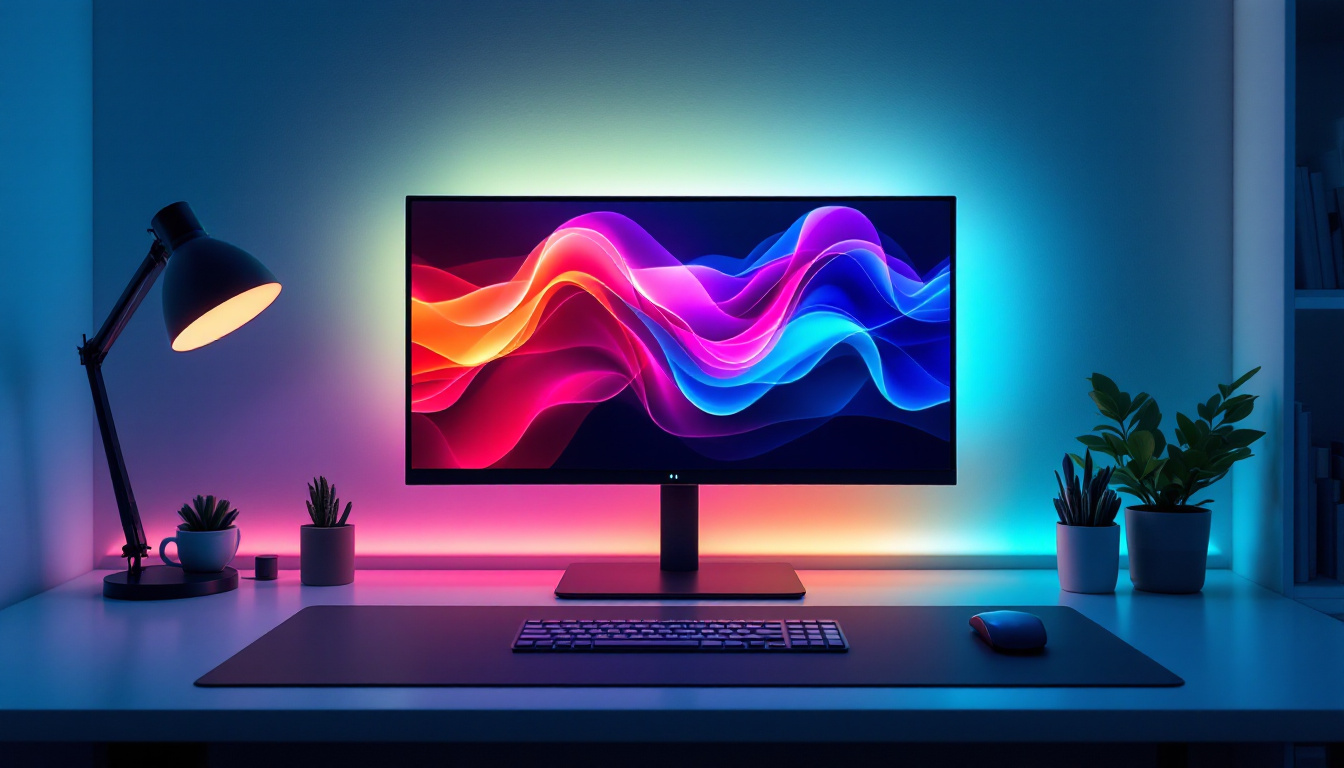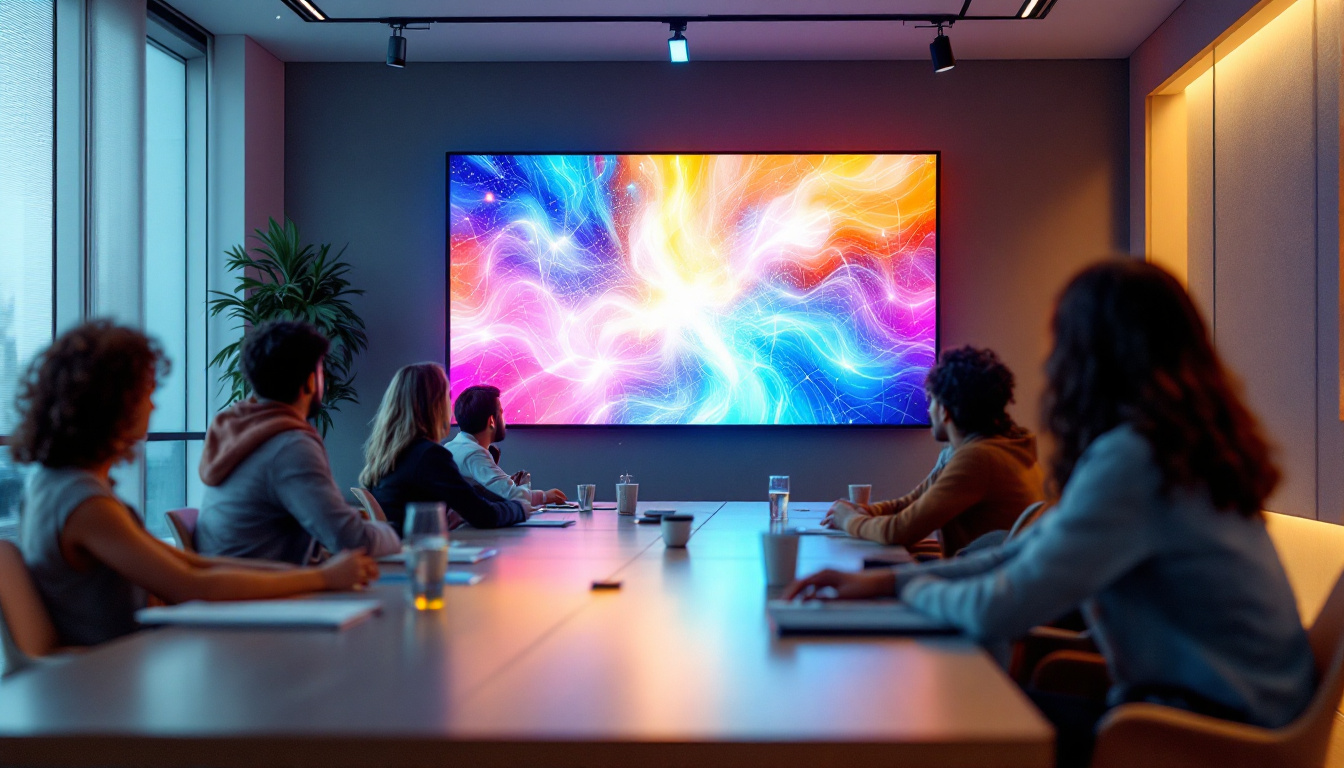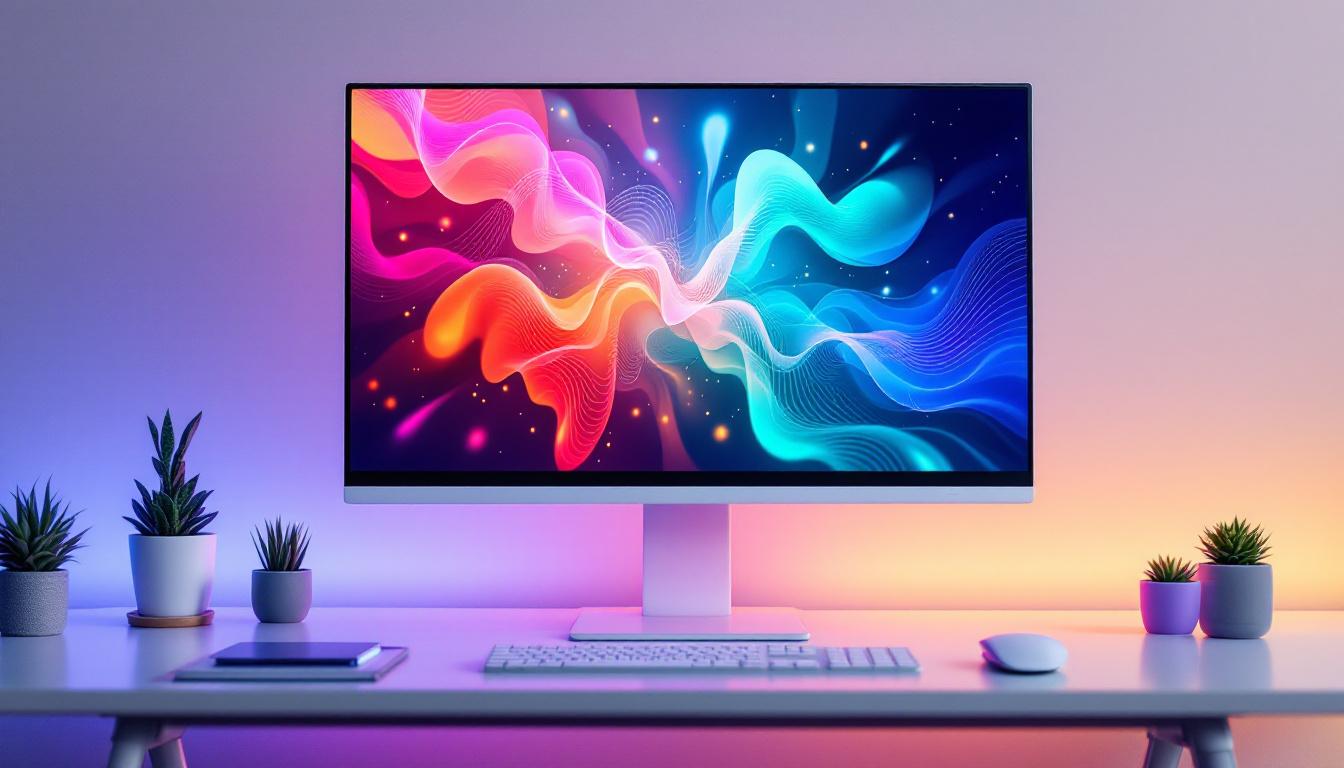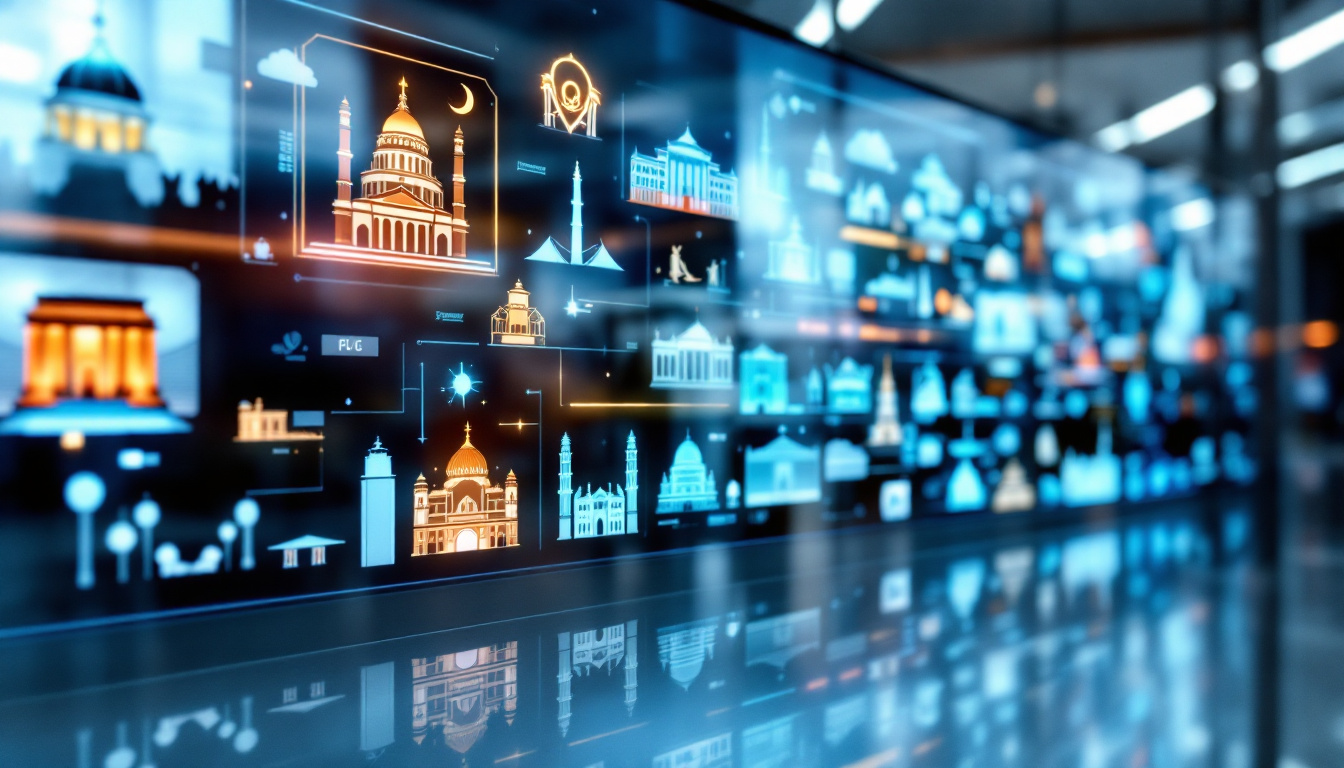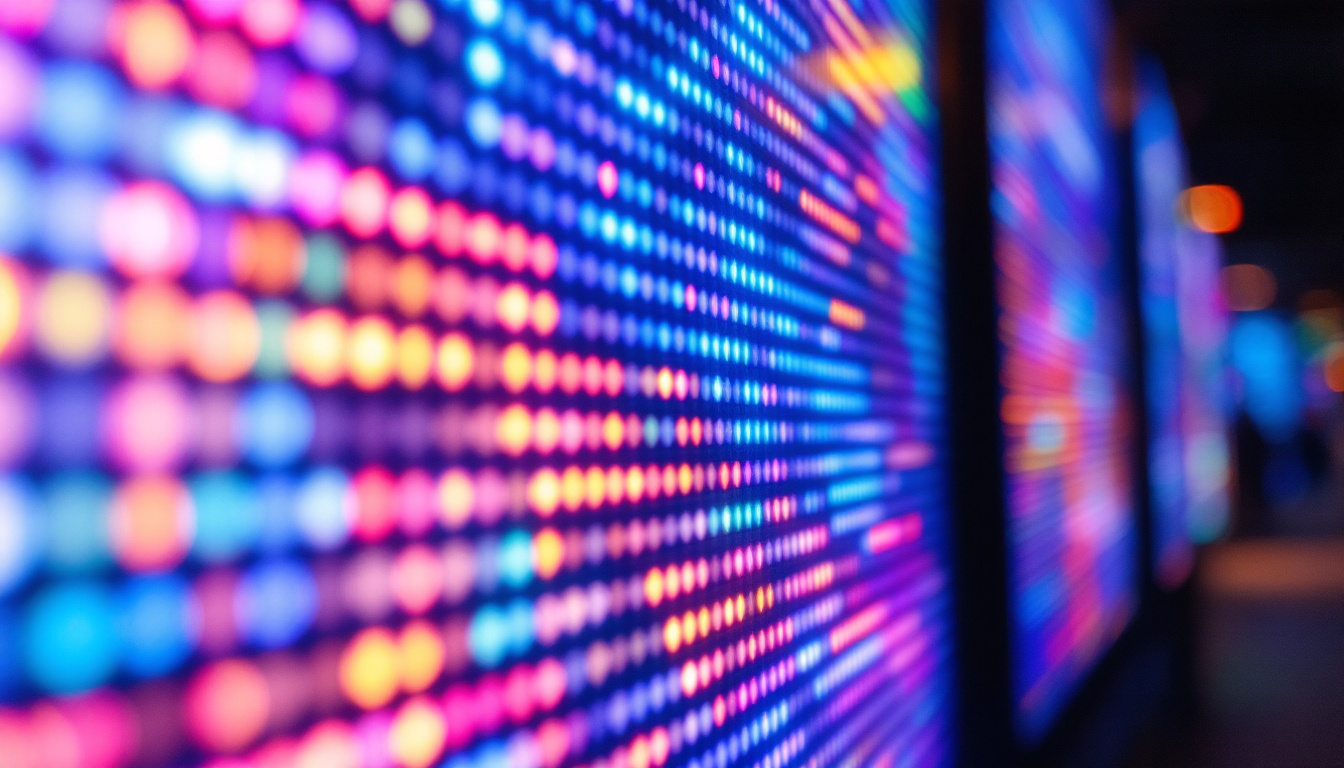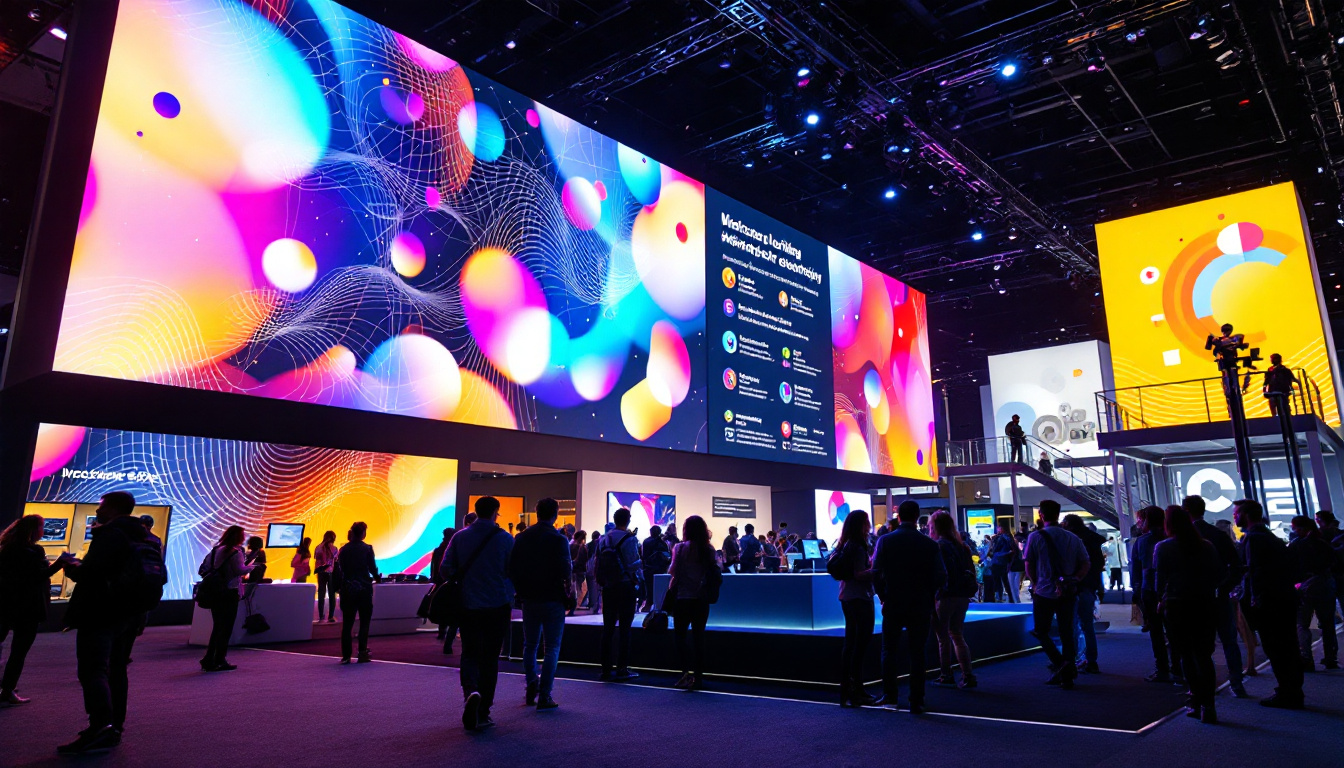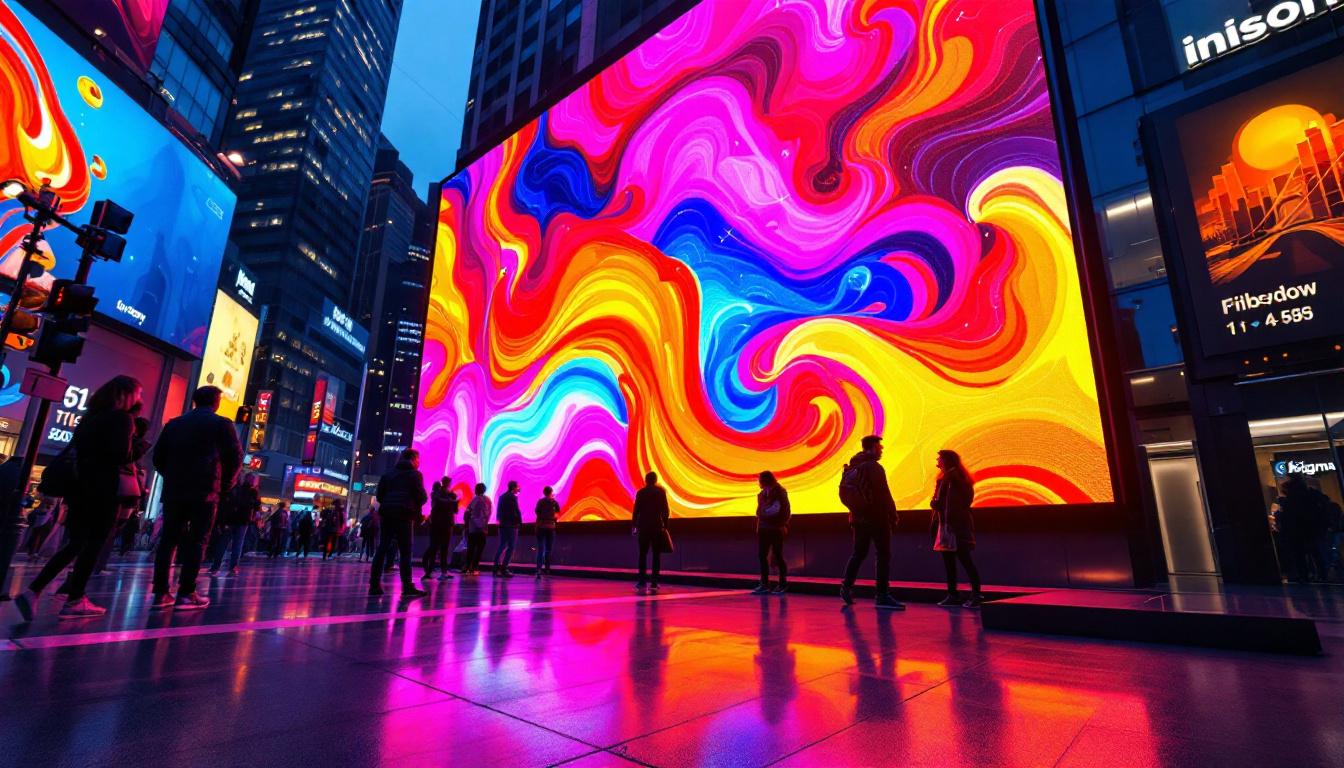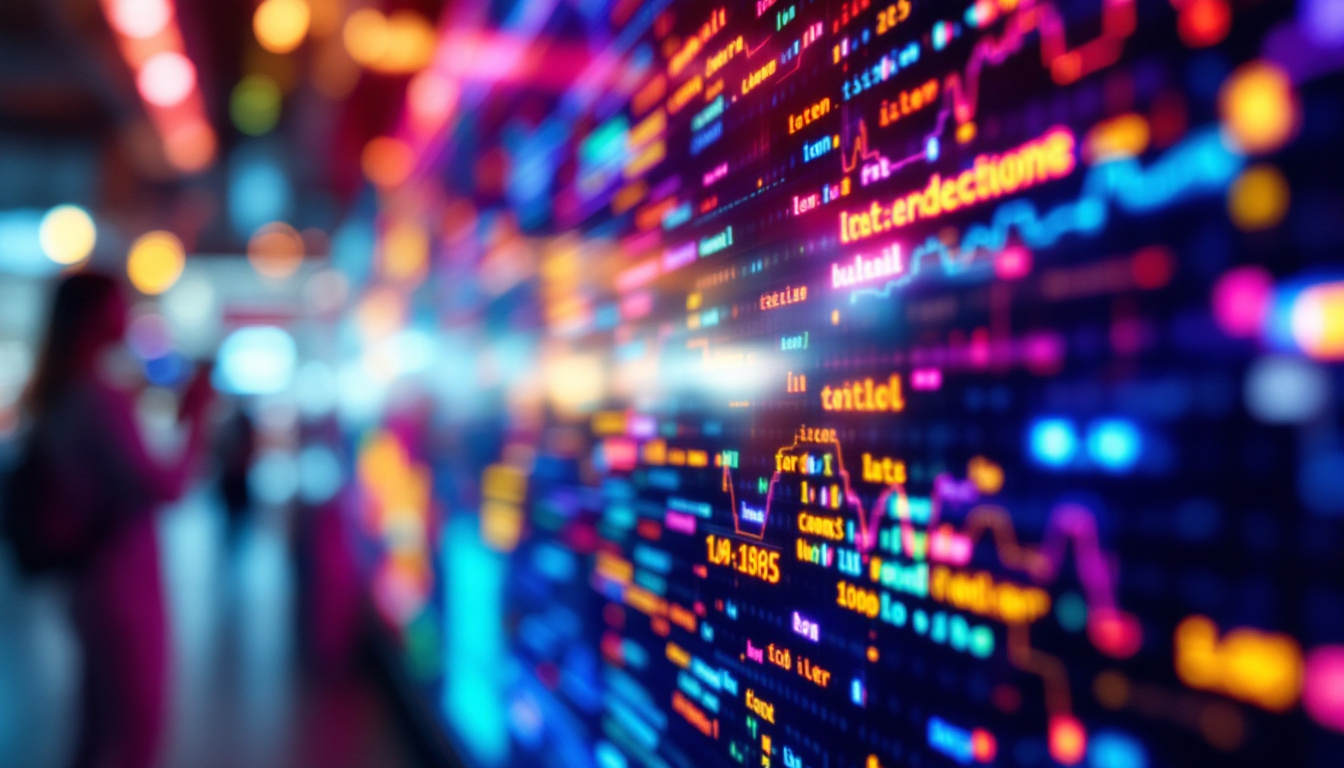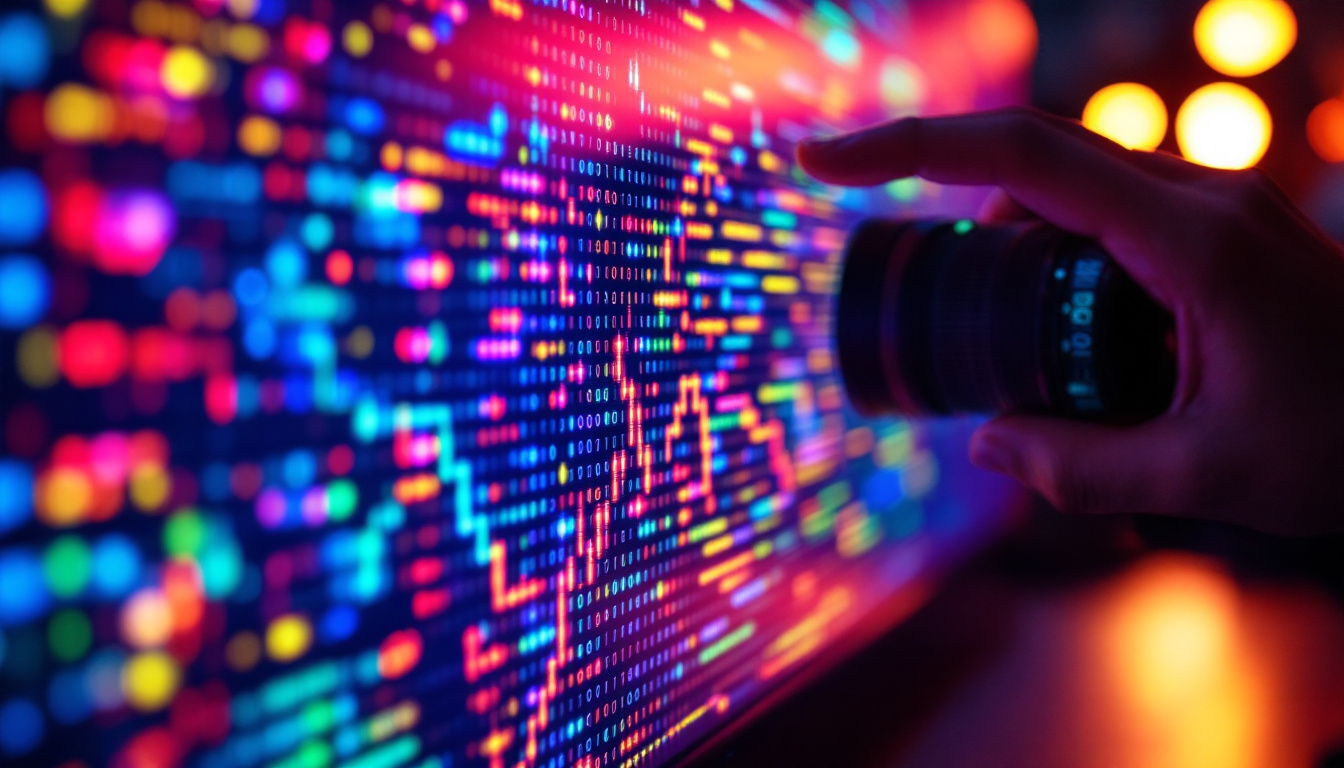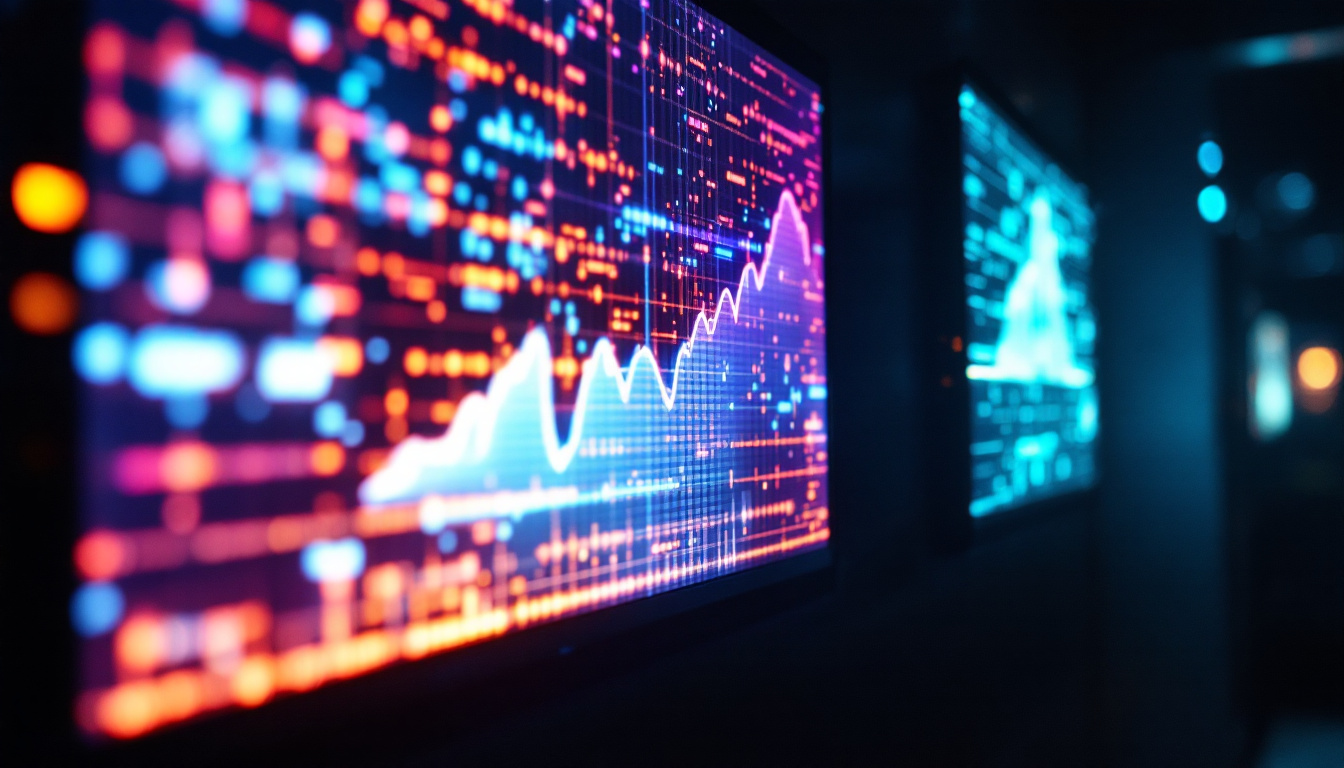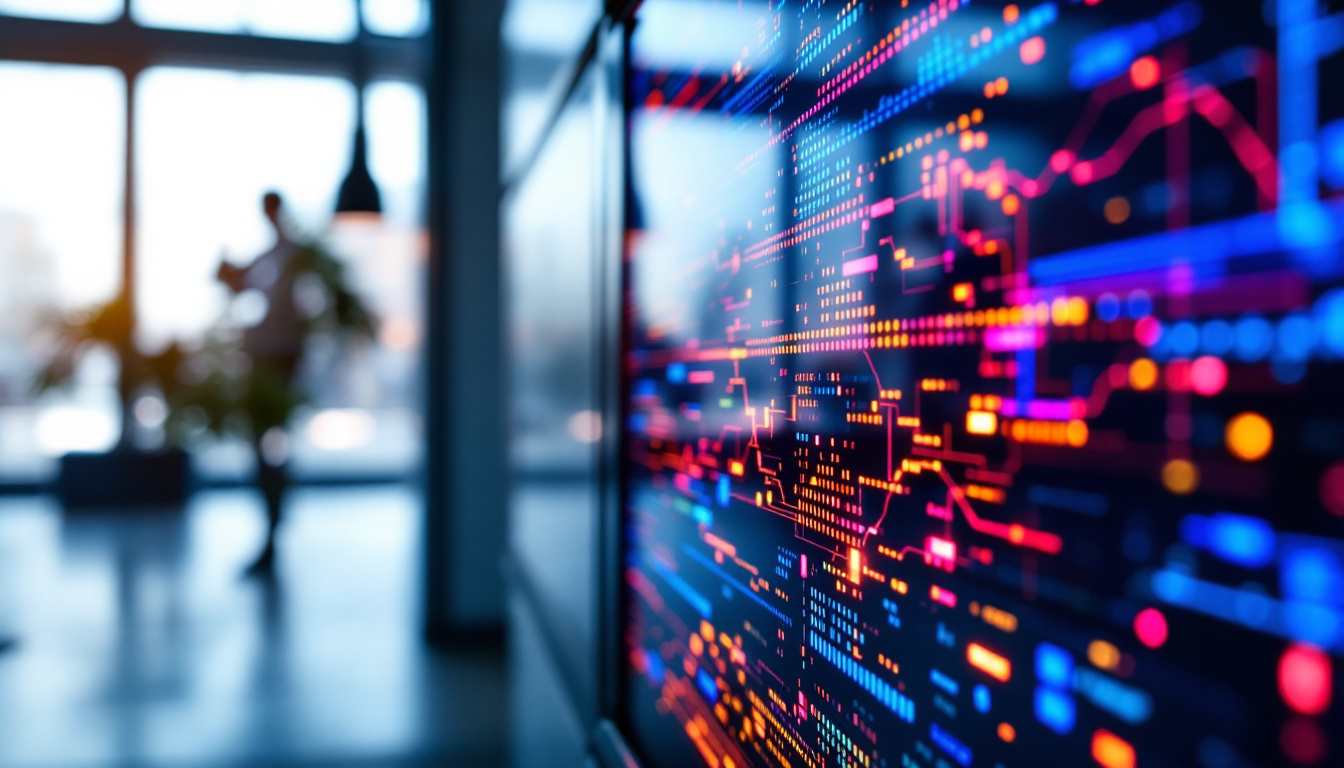3D LED Screen: LED Display Explained
The evolution of display technology has brought forth a myriad of advancements, among which the 3D LED screen stands out as a remarkable innovation. These screens, characterized by their ability to create immersive visual experiences, have transformed the way information is presented across various industries. This article delves into the intricacies of 3D LED displays, exploring their technology, applications, and the future they promise.
Understanding LED Technology
Light Emitting Diodes (LEDs) are the foundational technology behind modern display screens. Unlike traditional display technologies, LEDs utilize semiconductor materials to emit light when an electric current passes through them. This unique property allows for a range of applications, from simple indicator lights to complex display systems. The versatility of LEDs has revolutionized the way we interact with technology, making them an integral part of our daily lives, from smartphones to large-scale advertising displays.
How LEDs Work
At the core of LED technology is the principle of electroluminescence. When voltage is applied to a semiconductor, electrons recombine with holes, releasing energy in the form of light. This process is highly efficient, leading to lower power consumption compared to conventional lighting methods. Furthermore, LEDs can be combined in various configurations to create vibrant colors and high-resolution images. The lifespan of an LED can also reach up to 50,000 hours or more, significantly outlasting traditional incandescent bulbs, which typically last around 1,000 hours. This longevity not only reduces waste but also lowers replacement costs over time.
Types of LED Displays
LED displays can be categorized into several types based on their application and configuration. The most common types include:
- Direct View LED: These displays consist of individual LED modules that are directly visible to the viewer. They are often used in large outdoor displays and billboards.
- LED Backlit LCD: This type uses LEDs to backlight an LCD panel, providing better contrast and color accuracy.
- Organic LED (OLED): OLED technology utilizes organic compounds that emit light, allowing for thinner displays with superior color and contrast.
In addition to these common types, there are also specialized LED displays designed for specific applications. For instance, MicroLED technology is emerging as a game-changer in the display industry, offering even finer pixel densities and improved energy efficiency. MicroLEDs consist of microscopic LEDs that can be individually controlled, resulting in unparalleled brightness and color fidelity. This technology is particularly promising for virtual reality (VR) and augmented reality (AR) applications, where immersive experiences depend on high-quality visuals. Moreover, advancements in flexible LED displays are paving the way for innovative designs in consumer electronics, allowing screens to be curved or bent without compromising performance.
The Rise of 3D LED Screens
3D LED screens represent a significant leap forward in display technology, offering a depth of field that traditional 2D screens cannot achieve. By employing advanced techniques, these screens create the illusion of three-dimensional images, enhancing viewer engagement and interaction. This innovation not only captivates audiences but also transforms how information is presented and consumed in various industries.
How 3D LED Screens Work
3D LED screens utilize a combination of stereoscopic imaging and advanced optics to produce the illusion of depth. Stereoscopic images are created by displaying two slightly offset images, one for each eye. This mimics the natural way humans perceive depth, resulting in a more immersive experience. The technology behind these screens is continually evolving, with researchers exploring new methods to refine image quality and reduce latency, ensuring that viewers enjoy a seamless experience.
Additionally, some 3D LED screens use parallax barriers or lenticular lenses to direct different images to each eye, further enhancing the 3D effect without requiring special glasses. This technology allows for a more natural viewing experience, making it ideal for various applications. The integration of motion tracking is also being explored, where the display can adjust the images based on the viewer’s position, creating an even more personalized and engaging interaction.
Applications of 3D LED Screens
The versatility of 3D LED screens has led to their adoption across multiple sectors. Some notable applications include:
- Advertising: Brands leverage 3D LED displays to create eye-catching advertisements that capture consumer attention in busy environments. These displays can showcase products in a way that traditional advertising cannot, allowing potential customers to visualize items in a more dynamic and appealing manner.
- Entertainment: The film and gaming industries utilize 3D LED screens to enhance visual storytelling, immersing audiences in dynamic worlds. With the rise of virtual reality and augmented reality, 3D LED screens are becoming essential in creating environments that feel real, drawing players and viewers deeper into the narrative.
- Education: Educational institutions are beginning to use 3D displays to create interactive learning experiences, making complex subjects more accessible and engaging. For instance, medical schools can use 3D visuals to simulate surgeries, allowing students to practice in a risk-free environment while gaining valuable hands-on experience.
Beyond these applications, 3D LED screens are also finding their way into art installations and museums, where they can bring static exhibits to life. Artists are experimenting with this technology to create immersive experiences that challenge perceptions and provoke thought. By blending art and technology, 3D LED screens are redefining the boundaries of creativity and expression, inviting viewers to engage with art in a whole new dimension.
Advantages of 3D LED Screens
The adoption of 3D LED screens comes with numerous advantages that set them apart from traditional display technologies. These benefits contribute to their growing popularity in various fields.
Enhanced Visual Experience
One of the most significant advantages of 3D LED screens is their ability to provide an enhanced visual experience. The depth perception created by these displays allows for more engaging content, capturing the viewer’s attention and making information more memorable. This immersive quality is particularly beneficial in sectors such as entertainment and education, where captivating visuals can enhance storytelling and learning. For example, in museums and exhibitions, 3D LED screens can bring historical artifacts to life, allowing visitors to experience them in a way that feels interactive and dynamic.
Energy Efficiency
3D LED screens are generally more energy-efficient compared to older display technologies. Their ability to produce bright images with lower power consumption translates to cost savings over time, making them a sustainable choice for businesses and organizations. This energy efficiency also means that companies can reduce their carbon footprint, aligning with global efforts to promote environmental sustainability. Furthermore, many modern 3D LED screens come equipped with smart technology that optimizes power usage based on the content being displayed, further enhancing their eco-friendly credentials.
Durability and Longevity
LED technology is known for its durability. 3D LED screens are less prone to damage from environmental factors, making them suitable for both indoor and outdoor use. Additionally, they have a longer lifespan than traditional displays, reducing the need for frequent replacements. This resilience is especially advantageous in high-traffic areas, such as shopping malls and public transportation hubs, where screens are subject to wear and tear. Moreover, many manufacturers offer protective coatings and weatherproof designs that ensure these screens can withstand harsh conditions, such as extreme temperatures, humidity, and direct sunlight, further extending their usability in diverse environments.
Challenges and Considerations
Despite their numerous advantages, 3D LED screens also face challenges that must be addressed for widespread adoption. Understanding these challenges can help businesses make informed decisions regarding their use.
Cost of Implementation
One of the primary challenges associated with 3D LED screens is the initial investment required for implementation. The technology and components needed to create high-quality 3D displays can be expensive, which may deter some businesses from adopting them.
Content Creation
Creating content for 3D LED screens requires specialized skills and tools. Businesses must invest in training or hire professionals who can produce high-quality 3D content, adding to the overall cost of ownership.
Viewing Distance and Angle
3D LED screens often require specific viewing distances and angles to achieve optimal visual effects. This limitation can pose challenges in certain environments where viewer positioning is not easily controlled, potentially diminishing the impact of the display.
The Future of 3D LED Screens
The future of 3D LED screens appears promising, with ongoing advancements in technology and applications. As the demand for immersive experiences continues to grow, several trends are emerging that could shape the future of this display technology.
Integration with Augmented and Virtual Reality
As augmented reality (AR) and virtual reality (VR) technologies advance, the integration of 3D LED screens with these platforms is becoming increasingly feasible. This convergence could lead to more immersive experiences in gaming, training simulations, and virtual events.
Improved Interactivity
Future 3D LED screens are expected to incorporate enhanced interactivity features, allowing viewers to engage with content in real-time. This could include gesture recognition, touch capabilities, and even voice commands, creating a more dynamic and personalized viewing experience.
Advancements in Content Delivery
With the rise of cloud computing and streaming technologies, the delivery of high-quality 3D content is becoming more accessible. This trend could simplify the process of content creation and distribution, making it easier for businesses to leverage 3D LED screens effectively.
Conclusion
3D LED screens represent a significant advancement in display technology, offering unique advantages that enhance visual experiences across various sectors. While challenges remain, the potential for growth and innovation in this field is immense. As technology continues to evolve, 3D LED screens are poised to become an integral part of how information is communicated and experienced, paving the way for a more immersive future.
Explore the Future of Visual Engagement with LumenMatrix
Ready to elevate your visual communication and create unforgettable experiences? LumenMatrix is at the forefront of LED display innovation, offering a diverse range of solutions tailored to your needs. From captivating Indoor LED Wall Displays to dynamic Outdoor LED Wall Displays, and from versatile Vehicle LED Displays to engaging LED Sports Displays, our technology is designed to transform your space and captivate your audience. Discover how our LED Poster Displays, Floor LED Displays, Custom LED Displays, All-in-One LED Displays, and LED Transparent Displays can revolutionize your brand’s visibility. Embrace the immersive future with LumenMatrix and Check out LumenMatrix LED Display Solutions today.


